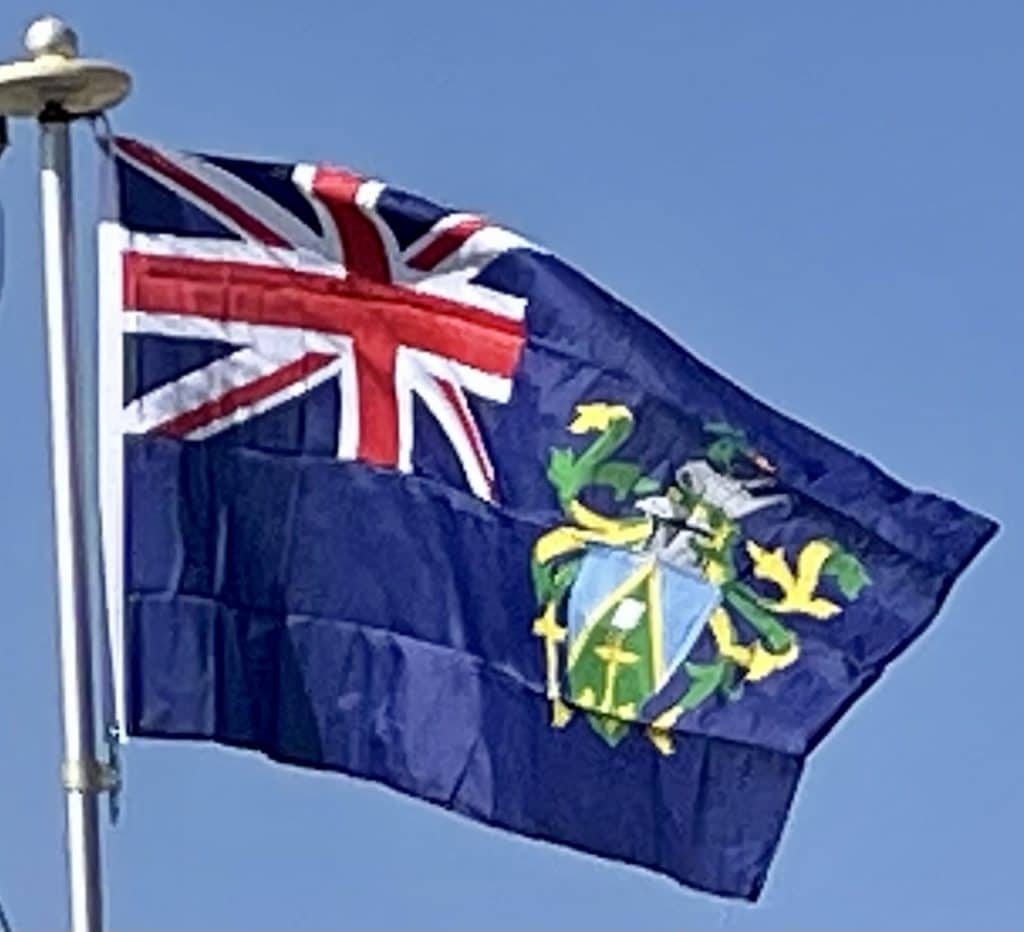

Pitcairn Islands
In 1790, nine of the mutineers from the Bounty, along with the native Tahitian men and women who were with them (six men, eleven women, and a baby girl), settled on Pitcairn Island and set fire to the Bounty. The inhabitants of the island were well aware of the Bounty’s location, which is still visible underwater in Bounty Bay, but the wreckage gained significant attention in 1957 when documented by National Geographic explorer Luis Marden. Although the settlers survived by farming and fishing, the initial period of settlement was marked by serious tensions among them. Alcoholism, murder, disease and other ills took the lives of most mutineers and Tahitian men. John Adams and Ned Young turned to the scriptures, using the ship’s Bible as their guide for a new and peaceful society. Young eventually died of an asthmatic infection.
Ducie Island was rediscovered in 1791 by Royal Navy captain Edwards aboard HMS Pandora, while searching for the Bounty mutineers. He named it after Francis Reynolds-Moreton, 3rd Baron Ducie, also a captain in the Royal Navy.
The Pitcairn islanders reported it was not until 27 December 1795 that the first ship since the Bounty was seen from the island, but it did not approach the land and they could not make out the nationality. A second ship appeared in 1801, but made no attempt to communicate with them. A third came sufficiently near to see their house, but did not try to send a boat on shore. Finally, the American sealing ship Topaz, under Mayhew Folger, became the first to visit the island, when the crew spent 10 hours on Pitcairn in February 1808. Whalers subsequently became regular visitors to the island. The last recorded whaler to visit was the James Arnold in 1888.

A report of Folger’s discovery was forwarded to the Admiralty, mentioning the mutineers and giving a more precise location of the island: 25°02′S 130°00′W. However, this was not known to Sir Thomas Staines, who commanded a Royal Navy flotilla of two ships, HMS Briton and HMS Tagus, which found the island at 25°04′S 130°25′W (by meridian observation) on 17 September 1814. Staines sent a party ashore and wrote a detailed report for the Admiralty. By that time, only one mutineer, John Adams, remained alive. He was granted amnesty for his part in the mutiny.
Henderson Island was rediscovered on 17 January 1819 by British Captain James Henderson of the British East India Company ship Hercules. Captain Henry King, sailing on Elizabeth, landed on 2 March to find the king’s colors already flying. His crew scratched the name of their ship into a tree. Oeno Island was discovered on 26 January 1824 by American captain George Worth aboard the whaler Oeno.
In 1832 having tried and failed to petition the British government and the London Missionary Society; Joshua Hill, an American adventurer arrived. He reported that by March 1833, he had founded a Temperance Society to combat drunkenness, a “Maundy Thursday Society”, a monthly prayer meeting, a juvenile society, a Peace Society and a school.
British colony:
Traditionally, Pitcairn Islanders consider that their islands “officially” became a British colony on 30 November 1838, at the same time becoming one of the first territories to extend voting rights to women. By the mid-1850s, the Pitcairn community was outgrowing the island; its leaders appealed to the British government for assistance, and were offered Norfolk Island. On 3 May 1856, the entire population of 193 people set sail for Norfolk on board the Morayshire, arriving on 8 June after a difficult five-week trip. However, just eighteen months later, seventeen of the Pitcairn Islanders returned to their home island, and another 27 followed five years later.